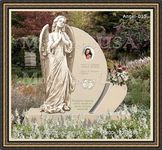|
General Tips For Selecting Funeral Dress Attire
At one time, mourning a loved one meant dressing completely in black, including veils, hats and gloves. The rules of expected funeral attire have been altered over the years. The basics will remain the same though there are certain influences and circumstances that will require some occasional adjustments in style.
The traditional black suit and simple dress are very much still considered the best choice. The modern version is a semi-formal look that is just slightly more relaxed. The new normal is a bit more casual and comfortable, incorporating the additional accepted colors of gray and dark blue.
For men, a full suit and tie ensemble is traditional, though the more casual slacks, sport coat and collared golf shirt combination is also acceptable. The main thing is to keep it conservative and always wear black dress shoes. Pant, jacket and tie colors should remain dark with patterns being subdued or not at all.
Women should wear conservative office style dresses, skirts or suits in the darker colors. Avoid necklines that are low, hems that are high and patterns and design elements that are flashy as these elements tend to draw attention which is inappropriate for such an occasion. Flat shoes may be substituted for heels, especially for outdoor services.
The rules for children are far less rigid. Generally speaking, their style should be an age appropriate version of what adult's clothing with boys in suits or a collared shirt and tie, and girls in dresses. Though the little ones are not expected to wear black, their colors should be dark or neutral with patterns and ruffles kept to a minimum.
Though the basics of appropriate funeral attire are a safe guideline, there are exceptions to the rules. Some cultures or religions have specific ways that mourners are expected to dress and those should be followed out of respect. Occasionally the deceased will have left behind special requests as to the type of clothing they would like guests to wear and final wishes always take precedence over tradition.
|
|



























